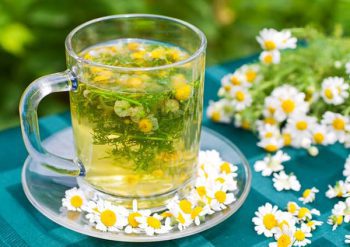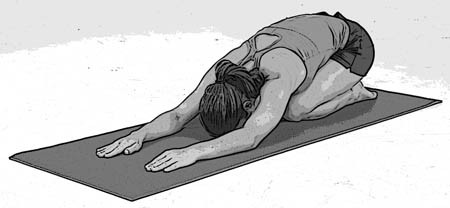 By Nick Polizzi
By Nick Polizzi
Guest Writer for Wake Up World
We all get a little worn down now and then, and this is when those not-so-great habits can begin to form. I’ve found that it can be extremely helpful to have some self-sooth practices in your back pocket for times like these.
Today, I want to show you 3 tried and true ways to rejuvenate your body and spirit using some ancient wisdom that is backed by science.
[pro_ad_display_adzone id=”110028″]
#1 An Easy And Ultra Feel-good Yoga Pose
I know that there are a lot of different ideas about what practicing yoga entails. But no, you don’t have to be incredibly flexible and you don’t have to balance on your head ?
Doing yoga is a way of moving the body and regulating your breathing to calm the mind and bring yourself back into balance. A lot of people get intimidated when they think about yoga because they imagine the intense poses that we see in mainstream depictions of Vinyasa (the most common type of yoga practiced in studios).
But there is another type of yoga that is gentle and relaxing; it’s called Yin Yoga.
Yin yoga requires you to hold a simple position for at least 5 minutes. This gives you a deep stretch that heals your connective tissues. Yin Yoga also requires a stillness that creates the perfect space for meditation. Meditation has been proven time and time again to balance your fight or flight response, release muscle tension, and fight depression.
The powerful and rejuvenating yin yoga movement I want to share with you today is called Child’s Pose (Balasana).

Here’s how to do it:
It’s incredibly simple. Just kneel with the tops of your feet on the ground and sit your hips back on your heels. Extend your hands forward and rest your forehead on your knees (or the ground if you can!). This introverted position is amazing for blood pressure and stretches the worn muscles that run along your spine. It also facilitates a cocoon-like shape that will help you release emotional and spiritual tension. If you have any knee issues, you may place a pillow or bolster under your hips.
#2 Make Yourself A Floral Epsom Salt Bath
Ancient cultures have been using baths as therapy for centuries. Cleopatra was known to use lavender and rose petals for their calming abilities, as well as their skin-healing magic.
What’s great about having such detailed historical records is that healers and scientists have been able to confirm the effectiveness of these herbs’ healing constituents!
Roses are so powerful that just the scent of them has been clinically proven to fight depression.
Lavender is a renowned nervine relaxant and sedative that gets you relaxed and ready for a long night’s rest.
Add some epsom salts to that formula and you’ve got a luxurious healing experience in your own bathroom. Epsom salts are loaded with magnesium which not only gently detoxifies the body, but also soothes aches and pains. Many believe that the pinnacle of self care is an epsom salt bath soak.
Nip that stress in the bud while having some alone time to think about your thoughts in an amazing floral bath soak.
#3 Chamomile Lemon Ginger Tea
One of the beautiful things about making tea is that the practice requires all 4 elements and all 5 senses. This is the perfect dance of modern science and our ancestor’s understanding of balance.
When making tea, the fire warms the water. The water extracts the healing compounds from the herbs and flowers that were harvested from the earth. And you blow the wind from your lungs to cool down your powerful elixirs enough to take that beautiful first sip.
You hear the whistling kettle telling you that the water is ready to make tea. You smell the aroma from the plants as you add them to the teapot. You feel the warmth of the cup between your fingers. You see the steam coming up off the brim and taste the complex flavor notes as they dance on your tongue.
This mindfulness technique is one that brings awareness to your body and your surroundings. Therapists teach this grounding practice because your stress levels tend to diminish as you count your senses and the elements. This is often combined with breathing exercises which literally bring more oxygen to your whole body and steady your heart rate.
Taking these two scientifically proven de-stressing methods and applying them to making tea is the perfect recipe for relaxation— especially if you use an anxiety relief herb like chamomile.
About the ingredients in this tea:
Chamomile is one of the most well-studied and safe herbs, and is very popular today. It’s bittersweet flower is powerful enough to get your spiraling thoughts ready for bed, release tense muscles, and fight a migraine—yet is gentle enough to aid a teething babe.
Ginger has been used as a culinary spice for thousands of years, but it is also an extremely potent healing herb. This cherished rhizome is known throughout the world to soothe digestion, reduce nausea and reduce pain and inflammation.
Lemon may just look like a common citrus fruit, but when we examine its inner workings, it becomes a lot more than that. Lemons contain a ton of vitamin C, soluble fiber and plant compounds that give them a wide array of health benefits including: boosting hydration in the body, lowering cholesterol, improving digestion, preventing kidney stones, and even fighting cancer cells.
Wow…
Next time you’re feeling a little down, try brewing a cup of chamomile tea and then adding a slice of fresh ginger, topped with some fresh squeezed lemon. I like to add some honey too ?
With these three easy to pull off rituals, you’ve got a few go-to options to handle life’s ups and downs!
Stay curious,
Nick Polizzi
Recommended articles by Nick Polizzi:
- 5 Healing Herbs You Can Grow This Spring
- A Delicious Healing Flower and 3 Ways to Eat It
- 3 Powerful Indigenous Herbs from North America
- The Power of Fasting
- Three Ancient Beauty Secrets You’ve Never Heard Of
- The Art of Smudging: A Shamanic Cleansing Ritual
- Sacred Science: A Jungle Healing Technique You Can Use Anywhere
- 3 Wild Herbs for Lucid Dreaming
- Eye Gazing — An Exercise for Soul Vision
- 3 Ancient Medicines That Already Live In Your Home
About the author:
 Nick Polizzi has spent his career directing and editing feature length documentaries about natural alternatives to conventional medicine. Nick’s current role as director of “The Sacred Science” documentary and author of “The Sacred Science: An Ancient Healing Path For The Modern World” stems from a calling to honor, preserve, and protect the ancient knowledge and rituals of the indigenous peoples of the world.
Nick Polizzi has spent his career directing and editing feature length documentaries about natural alternatives to conventional medicine. Nick’s current role as director of “The Sacred Science” documentary and author of “The Sacred Science: An Ancient Healing Path For The Modern World” stems from a calling to honor, preserve, and protect the ancient knowledge and rituals of the indigenous peoples of the world.
For more, visit www.thesacredscience.com (where this article first appeared.)
[pro_ad_display_adzone id=”110027″]





